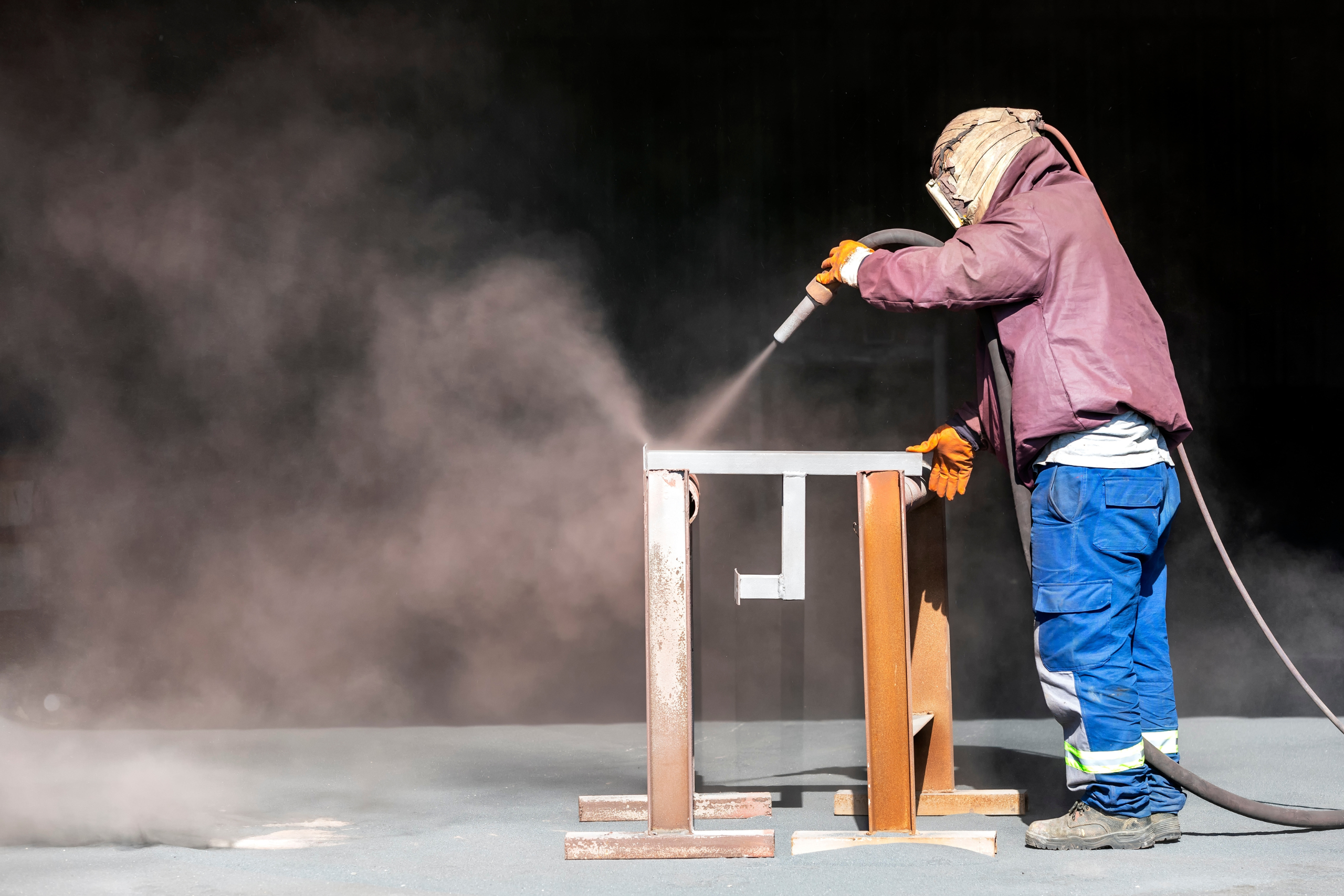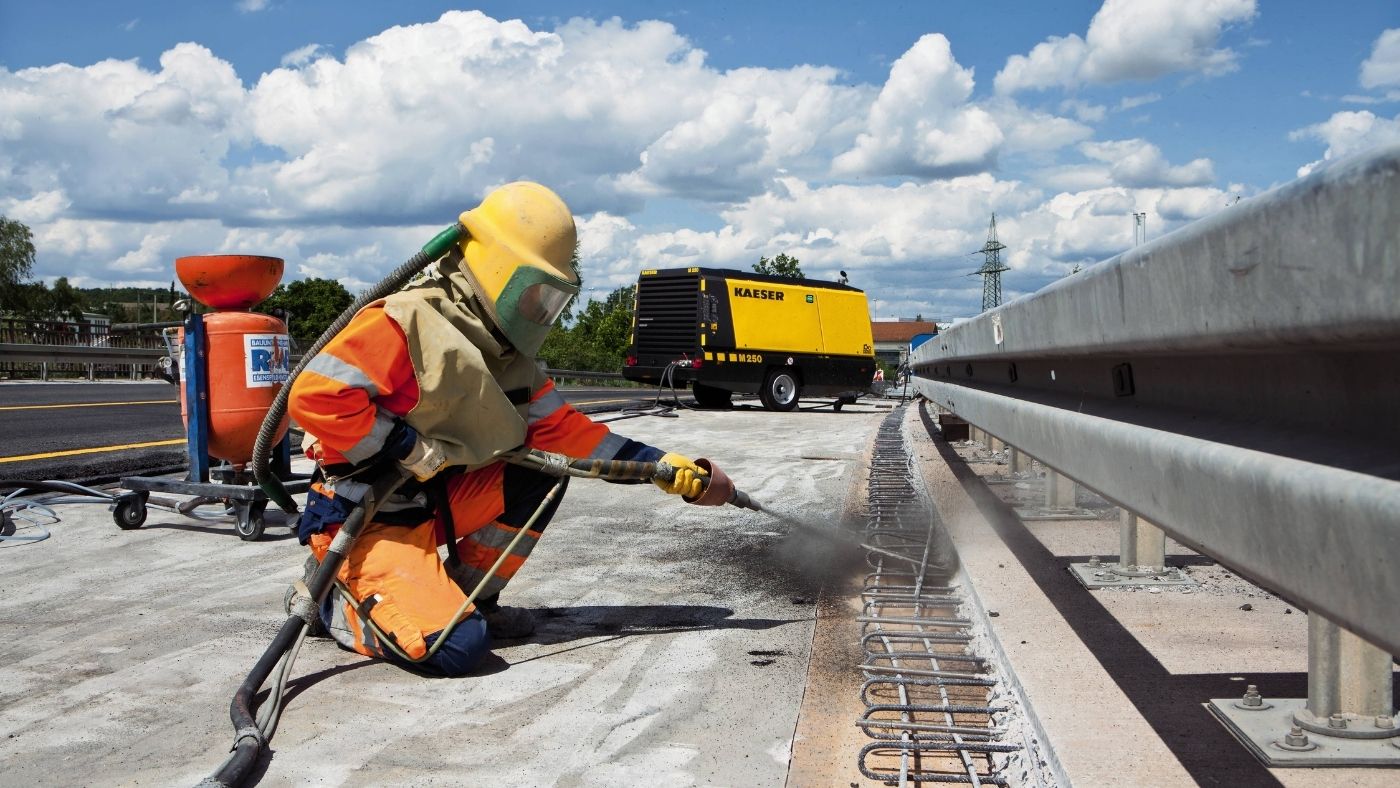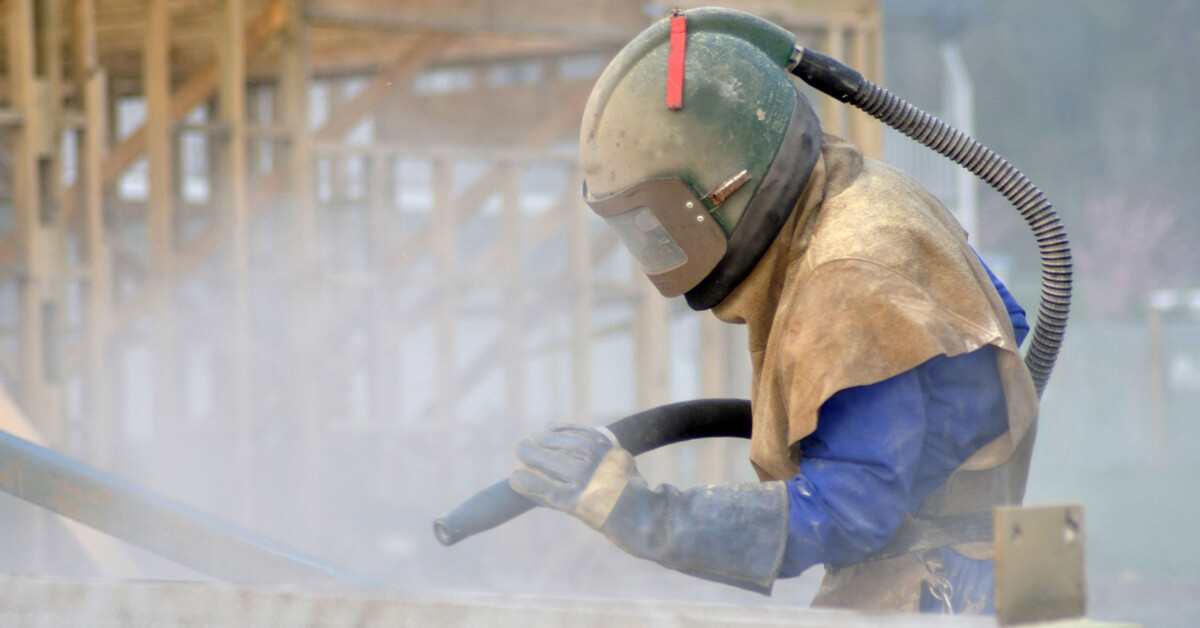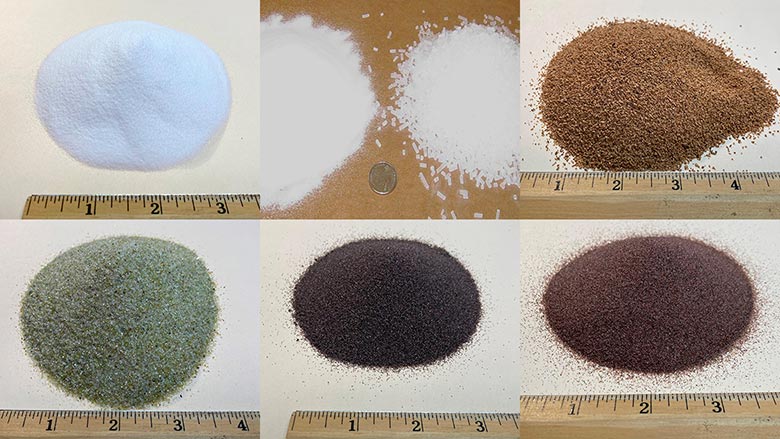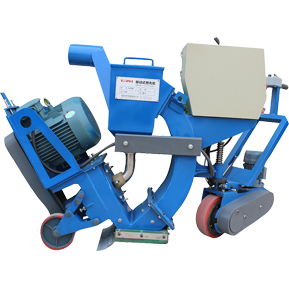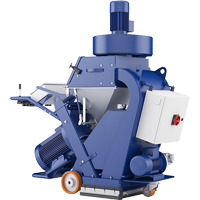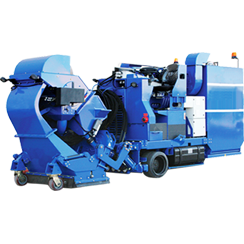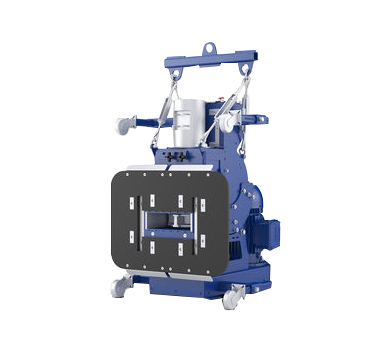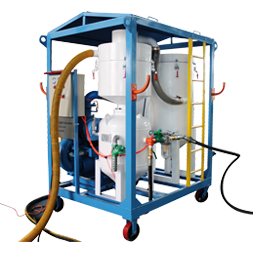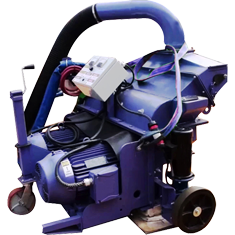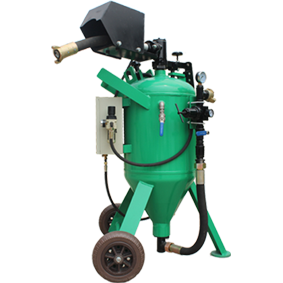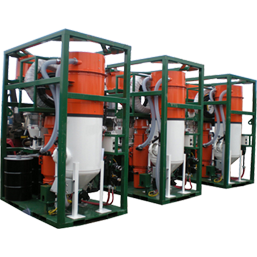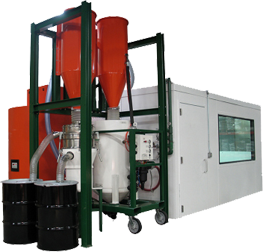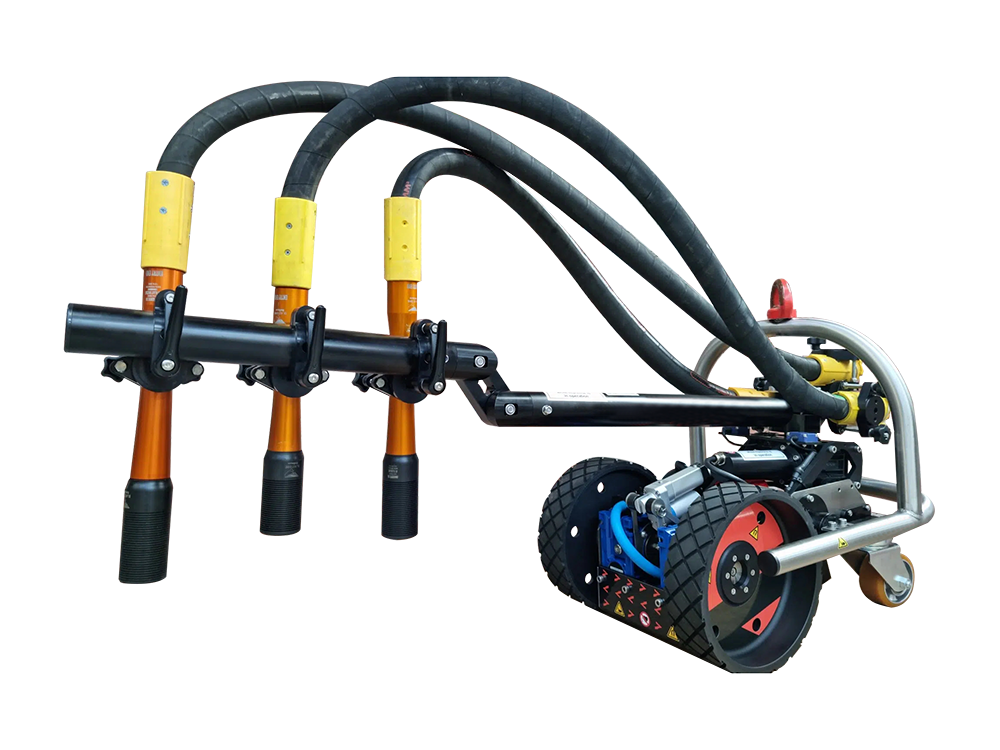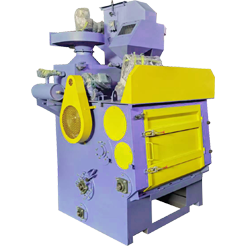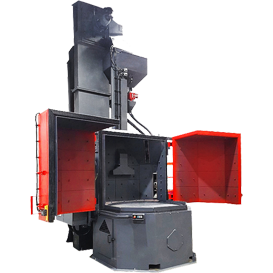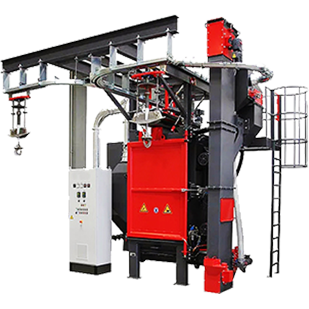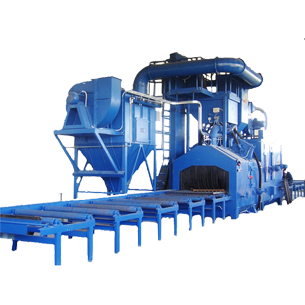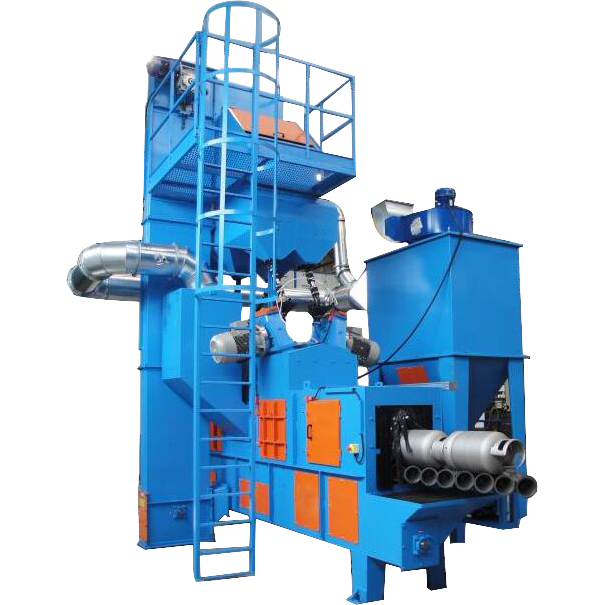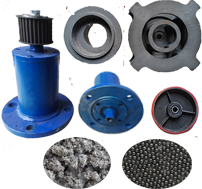BLOG
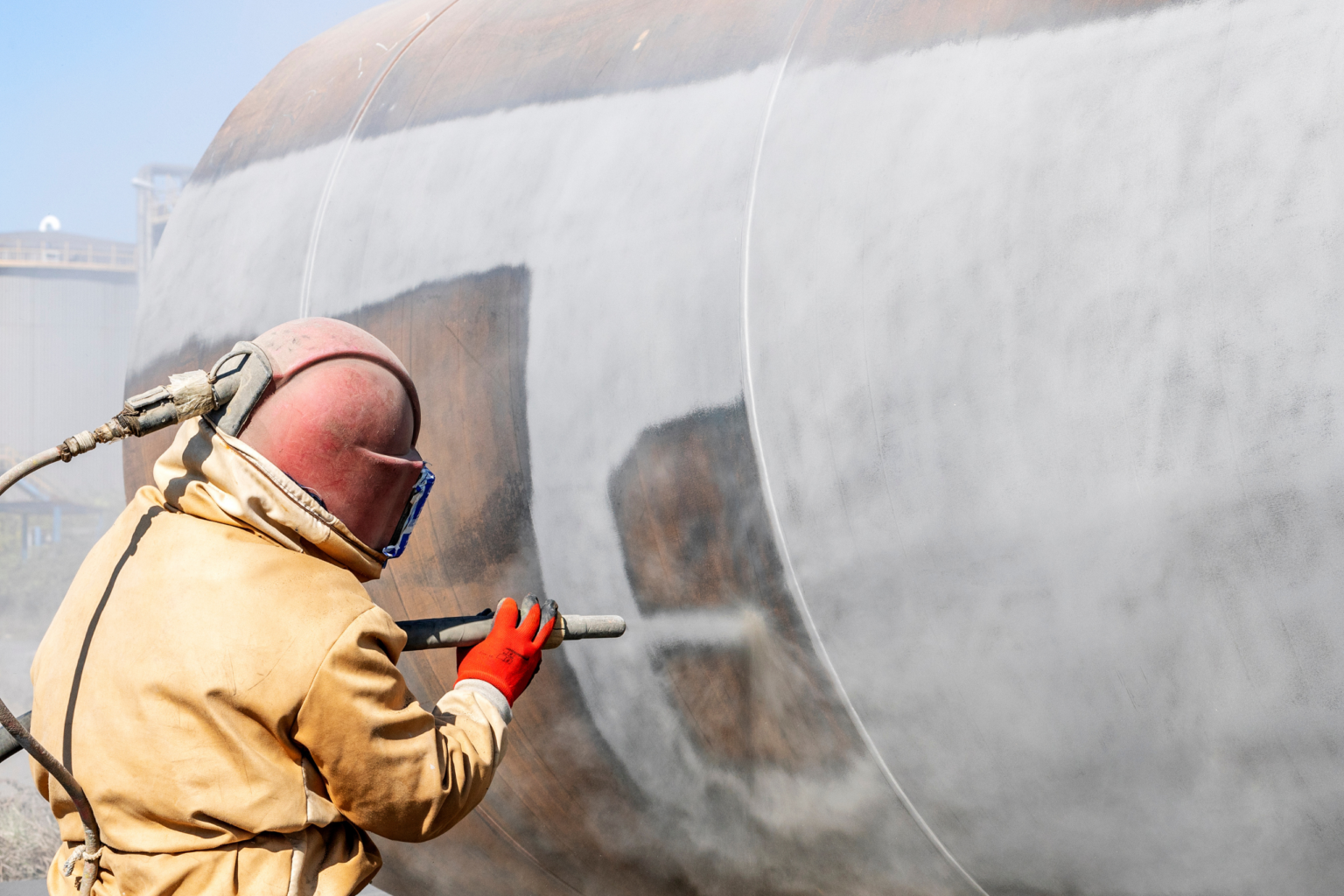
Keeping oil tanks clean is crucial for their maintenance, safety, and overall efficiency. Neglecting this essential task can lead to a buildup of sludge and corrosion, potentially causing leaks, environmental hazards, and reduced operational capacity. This blog will introduce the four best methods for cleaning oil tanks - sandblasting, high-pressure water blasting, chemical cleaning, and abrasive blasting with alternative media. Understanding these techniques will help ensure your oil tanks remain in top condition, safeguarding your investment and the environment.
Method 1: Sandblasting
Ensuring the cleanliness of oil tanks is critical for their efficiency and longevity. Sandblasting stands out as a premier method for achieving a thorough clean, stripping away unwanted layers and prepping the surface for further maintenance. Let’s delve into how sandblasting works, its benefits, and the essential safety and environmental precautions that accompany its use.
The sandblasting process
In the sandblasting process, abrasive materials, such as sand, are hurled at high velocities towards the oil tank's surface, effectively stripping away rust, old paint, and various surface contaminants. This method ensures an even application across the surface, adeptly reaching and cleaning even the most challenging corners for a thorough and comprehensive cleanse.
Advantages of sandblasting
lEfficiency: Sandblasting quickly cleans large surfaces, significantly reducing time and labor costs.
lPreparation for Maintenance: This method prepares the surface perfectly for the application of new coatings or paint, ensuring improved adhesion and longevity.
lVersatility: It is suitable for cleaning both interior and exterior surfaces of the tank, demonstrating its adaptability.
Safety and environmental considerations
lProtective Gear: Operators must wear appropriate safety gear, including respirators and protective clothing, to avoid inhaling harmful dust.
lDust Management: Employing dust collection systems, sandblasting room or booth, and using non-silica abrasives can help minimize health risks and environmental impact.
lWaste Disposal: Proper disposal of used abrasive materials and contaminants are necessary to prevent environmental pollution.
To sum up, sandblasting can clean oil tanks effectively and efficiently. However, it can still post threat to human health or damage the tank's surface. Therefore, proper equipment, techniques and protective measures must be employed to safeguard workers' health and ensure the integrity of the oil tank.
Method 2: High-pressure water blasting
Shifting away from conventional practices, high-pressure water blasting emerges as a greener, cleaner alternative for oil tank upkeep. By leveraging the force of water propelled at high speeds, this method delivers outstanding cleaning performance, bypassing the dust and rubble typical of abrasive methods. This narrative delves into the mechanics, advantages, and prime applications of this forward-thinking strategy in the realm of oil tank maintenance.
Understanding high-pressure water blasting
High-pressure water blasting employs water jets at elevated pressures to effectively remove dirt, rust, and residues from tank surfaces, ensuring a deep clean without harm. This method combines precision and power, allowing adjustments from gentle washing to tackling stubborn grime, catering to various cleaning requirements while preserving the integrity of the underlying surface.
Advantages of high-pressure water blasting
lEnvironmental Friendliness: With water as the cleaning medium, this method significantly reduces the environmental footprint, eliminating dust and hazardous waste.
lSafety and Health: Reduces the risk of respiratory issues for operators, as it doesn't generate harmful airborne particles.
lEfficiency in Cleaning: Capable of cleaning large areas quickly, saving time and reducing downtime for maintenance.
Ideal applications for high-pressure water blasting
lRemoving Soft Deposits: Perfect for tanks that have accumulated sludge or are coated with substances easily dissolved by water.
lSurface Preparation: Ideal for preparing the tank for inspection or new coatings, especially when a dust-free environment is required.
lSensitive Areas: When tanks are located near sensitive equipment or in populated areas where dust and noise need to be minimized.
Ideal for both regular upkeep and extensive inspection preparations, this technique ensures oil tanks are maintained in optimal condition, blending efficiency with environmental and safety considerations.
Method3: Chemical cleaning
Chemical cleaning introduces a targeted approach to maintaining oil tanks, utilizing specific chemical solutions to tackle residues that mechanical methods can't handle. This method is about using the right chemical for the right job, ensuring a clean tank without physical abrasion. Let's dive into the chemical cleaning process, its advantages, and the vital considerations to keep in mind.
The chemical cleaning process
The chemical cleaning process involves using specially chosen chemicals that effectively dissolve or loosen residues like oils, sludges, and rust within tanks. Selections include solvents for oil residues, acids to address rust and scale, and alkalis for organic deposits, each picked for their efficacy and compatibility with the tank materials.
Advantages of chemical cleaning
Chemical cleaning offers a high degree of effectiveness against stubborn residues, with the ability to dissolve deposits that physical cleaning methods can't reach, ensuring thorough cleanliness. This method is also efficient and time-saving, often enabling quicker cleaning operations with reduced manual labor, thereby minimizing the tank's downtime. Additionally, chemical cleaning boasts versatility; it can be customized to meet the unique needs of each tank, taking into account the specific type of residue present, the tank's construction material, and the required cleanliness level.
What is considerations for chemical cleaning?
lChemical Selection: Choosing the right chemical is crucial and should be based on the tank's contents, the nature of the residues, and the compatibility with the tank's construction material to avoid damage.
lSafety Measures: Handling and disposal of cleaning chemicals must adhere to environmental and safety regulations to protect workers and the environment.
lPre-Cleaning and Post-Cleaning Procedures: In many cases, a physical cleaning step may be required before chemical cleaning to remove loose debris, followed by a neutralization or rinsing process to remove any chemical residues.
Effective oil tank maintenance requires thorough planning for the application of chemical cleaning, which offers a precise solution to various cleaning challenges. Selecting suitable chemicals and prioritizing safety are critical factors for successful implementation. When done meticulously, chemical cleaning becomes an integral aspect of tank maintenance, enhancing cleanliness and prolonging operational efficiency and service life.
Method4: Abrasive blasting with alternative media
As industries seek more environmentally friendly and health-conscious solutions for maintenance tasks, abrasive blasting with alternative media has emerged as a compelling option for oil tank cleaning. This method retains the effectiveness of traditional sandblasting while mitigating many of its drawbacks. Let's examine how this innovative approach works, its benefits, and tips for selecting the most suitable media.
Exploring alternative abrasive media
Alternative abrasive media for tank cleaning, akin to traditional sandblasting, propel softer materials such as soda, walnut shells, or plastic beads at high speeds to strip unwanted substances. Soda blasting effectively removes grease and oil without harming the substrate, while walnut shells, being biodegradable, suit delicate surfaces. Plastic beads provide moderate abrasion without metal contamination risk. These options offer efficient cleaning while addressing environmental and safety concerns, making them favorable choices for oil tank maintenance.
What is advantages of alternative media blasting?
lEnvironmental Benefits: Many of these media are biodegradable and less harmful to the environment compared to silica sand. They often result in lower disposal costs and easier cleanup.
lHealth Safety: These alternatives significantly reduce the risk of respiratory problems for operators and bystanders by eliminating the harmful silica dust produced by sandblasting.
lSurface Integrity: Softer media can clean effectively without altering the tank's structural integrity, making them ideal for sensitive surfaces.
How to choose the right media?
lAssess Cleaning Requirements: Evaluate the type of residue to be removed (e.g., rust, oil, paint) and the tank's material. Softer media like soda are suited for oil and grease, while harder media can tackle rust and heavy deposits.
lConsider Environmental and Health Impacts: Opt for media with the lowest environmental impact and health risks. Biodegradable options are preferable where possible.
lTest Before Full Application: Conduct a small-scale test to ensure the selected media meets the cleaning needs without damaging the tank or leaving undesirable residues.
Abrasive blasting with alternative media offers a versatile and responsible choice for oil tank cleaning, combining the thoroughness of traditional methods with the added benefits of environmental and health safety. By carefully selecting the right media, operators can achieve excellent cleaning results while supporting sustainability and safety objectives.
How to ensuring the longevity and safety of oil tanks?
Regular and effective cleaning of oil tanks is crucial for their longevity, safety, and efficiency. Over time, residue buildup and corrosion can compromise the tank, posing environmental risks and necessitating expensive interventions. With various cleaning methods available, each suited to different contaminants and tank materials, selecting the right approach is vital.
Considering the specific needs of your tank and the environmental impact of cleaning, professional consultation is advisable. Experts can guide you through the best practices, ensuring your cleaning method not only preserves the tank's integrity but also aligns with environmental standards. Prioritize the health of your oil tanks by choosing a cleaning strategy that matches their requirements, guaranteeing safety and durability.
RELATED POSTS
LEAVE A REPLY
SEARCH
PRODUCT CATEGORIES
PRODUCTS
 Floor Shot Blasting Machine
Floor Shot Blasting Machine Steel Shot Blasting Machine
Steel Shot Blasting Machine Driving Type Shot Blasting Machine
Driving Type Shot Blasting Machine Vertical Shot Blasting Machine
Vertical Shot Blasting Machine Blast and Vacuum Recovery Machine
Blast and Vacuum Recovery Machine ROVAN Faster Blaster
ROVAN Faster Blaster Dustless Blasting Machine
Dustless Blasting Machine Sponge Blasting Machine
Sponge Blasting Machine Sand Blasting Booth
Sand Blasting Booth Automatic Robot Blast Machine
Automatic Robot Blast Machine Crawler Shot blasting Machine
Crawler Shot blasting Machine Turntable Shot Blasting Machine
Turntable Shot Blasting Machine Hook Type Shot Blasting Machine
Hook Type Shot Blasting Machine Roller Conveyor Shot Blasting Machine
Roller Conveyor Shot Blasting Machine LPG Cylinder Shot Blasting Machine
LPG Cylinder Shot Blasting Machine Abrasives/Accessories & Others
Abrasives/Accessories & Others

